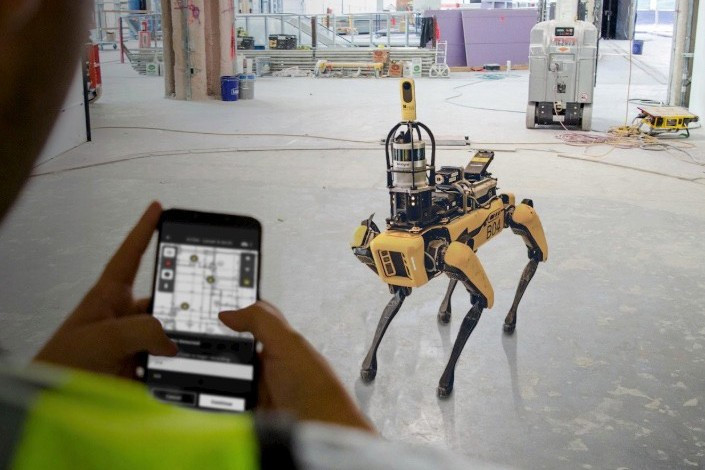Stugalux CEO Joël Schons sees the introduction of robots to the construction site as a simple evolution of the tools of the trade. “There was the hammer. Then there was the mechanical shovel. Now there is the robot,” he says of the two “Spot” robots the company has purchased from Boston Dynamics, the American engineering and robotics design outfit. “They are a tool,” says Schons, explaining that robots are not going to be actually building houses any time soon.
The Luxembourg construction company will be one of the first in Europe to use the robot dogs. Boston Dynamics only announced last Wednesday that it was opening sales in Europe, the UK, and Canada, after testing the interest of entrepreneurs it targeted as “early adopters”, of which Stugalux was one.
Stugalux will employ the dogs twice a week to go through some of its 200 work sites to check that the project is progressing according to specifications. Their lasers and onboard camera will allow the robots to measure and transmit data regarding all aspects of the site, down to the last millimetre.
Watch a promo video from Stugalux starring Luxembourg strongman Georges Christen.
Stugalux switched to BIM, “building information modelling”, about ten years ago. “We have digitalised all our site plans. Since we are dealing with both the construction and the finishing, the placement of each water faucet that is changed from what is on the plans because the foreman had a good reason to move it can lead us to lose time in the management of the site,” Schons explains. Any delay of a few hours or a few days per site can quickly add up to a significant amount.
“We need this feedback [from the roots], which allows us to adapt more quickly,” he says. That alone justifies the investment of more than $150,000--each of the creatures costs more than $75,000 according to the catalogue price. The two robots will first operate under the control of a human, before being able to autonomously patrol the construction sites.
But that’s not all. “I would also like to make young people understand that construction is not just about moving stones,” Schons explains. “It’s not just for old people. We’re slowly bringing in technology to help us.”
This article was first published in French by Paperjam. It has been translated and edited by Delano.
